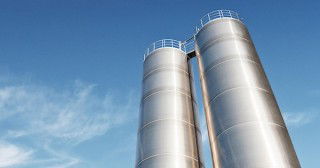Separate grinding and subsequent blending is a commonly used practice in the cement industry, enabling the lowering of the specific electric energy demand by using highly efficient comminution techniques. While ball mills are not the most energy-efficient mills, VDZ’s research has shown that in some cases ultrafine grinding by means of a stirred media mill combines the advantages of a ball mill with low overall specific energy demand. By J Knappert, S Seemann and PM Fleiger, VDZ, Germany.
Blending cements from various fine products is a common procedure and has been practised in the cement industry for decades. All the main constituents of cement are ground separately to different finenesses and mixed to achieve broad particle size distributions (PSD). The benefits of blended cements include the prevention of granulometric separation, the achievement of a lower specific electric energy demand, and the production of adjustable PSDs to achieve optimised cement properties. In many cases, clinker and limestone are comminuted in grinding circuits using high-pressure grinding rollers (HPGR) and ball mills (BM). Other components such as blastfurnace slag are often ground in vertical roller mills (VRM).
